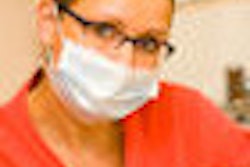The University of Adelaide has been awarded $1.3 million Australian ($1.37 million U.S.) to investigate the cause behind Australian children's poor oral health.
John Spencer, PhD, from the Australian Research Centre for Population Oral Health (ARCPOH) at the University of Adelaide, will lead a national study over the next four years to investigate why the system is failing Australia's children.
"Despite a substantial level of resources -- approximately [AU]$1 billion annually -- being directed to dental services for children in Australia in the last decade, their oral health is still a major public health problem," said Spencer in a press release. "After several decades of improvement, child oral health has worsened and inequalities have widened."
Latest statistics show that dental restorations and extractions are the most common reason for hospital admissions among Australian children younger than 14 years of age, according to the university. In 2006 nearly 27,000 children -- 8,114 of whom were preschoolers -- were admitted to the hospital for dental work.
"In this study we will be looking at how dental services for our children are organized and delivered, comparing the use of private dentists and school dental services and the outcomes for child oral health," Spencer said. "Public programs like the school dental services are not reaching as many children, yet private dental services may be out of the financial reach of many families."
The nationwide study will also document current levels of oral health and its variation across the child population.
"The challenge is to identify and eliminate barriers to dental health services in Australia, improving service delivery, reducing risks, and promoting healthy diets," Spencer said.
His team from the ARCPOH will partner with all eight Australian state and territory public dental authorities in the research project. The partners are committing a further AU$1.7 million, making the total funding for the study AU$3 million.
A representative sample of about 32,000 children ages 5 to 14 years old will be drawn from a mixture of public and private schools across Australia.



















